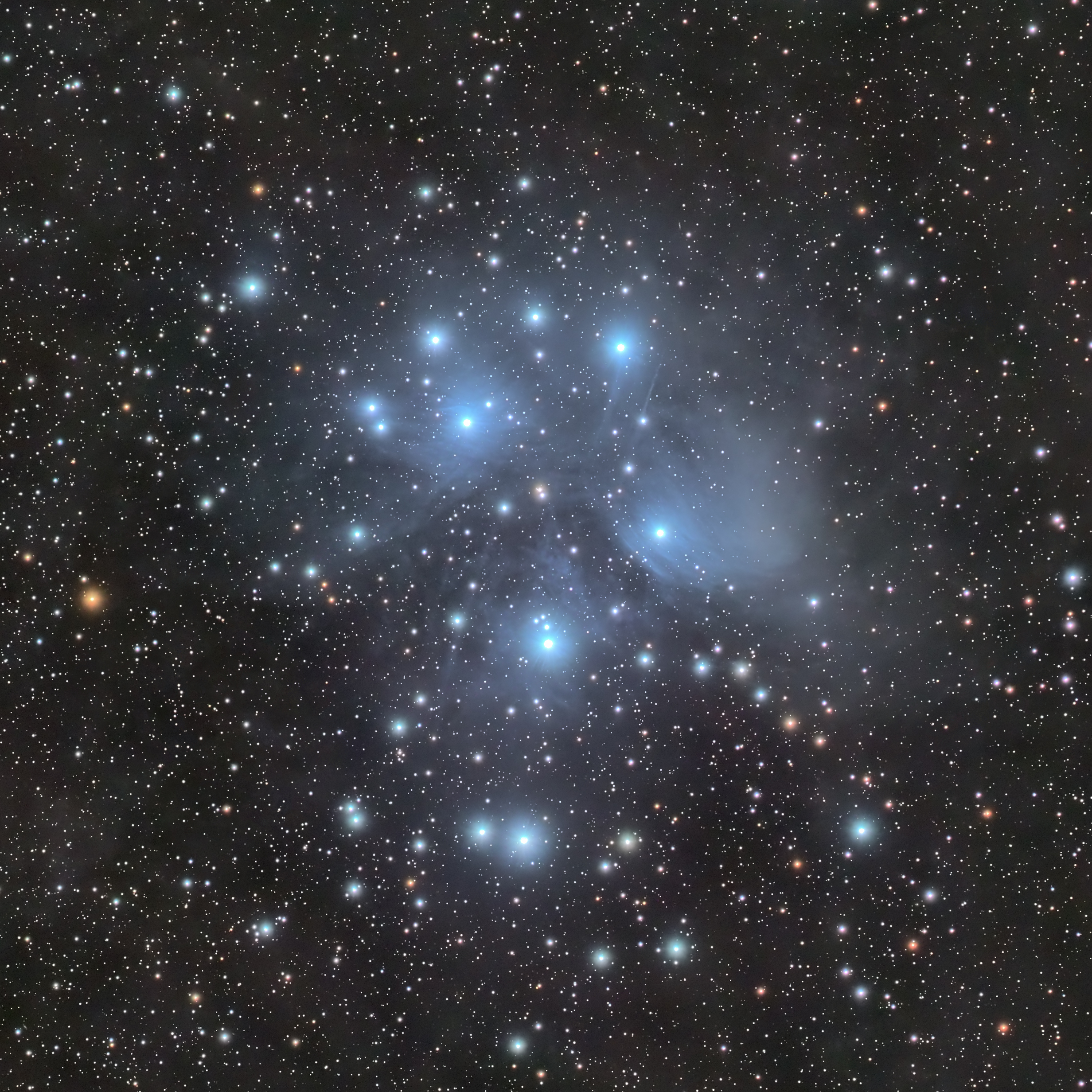The Pleiades, or M45, is an open star cluster located in the constellation of Taurus. It’s one of the nearest star clusters to Earth and is visible to the naked eye in both clear and dark skies. This cluster is sometimes called “The Seven Sisters,” after the seven most prominent stars in the cluster that can be easily seen without the aid of a telescope.
The stars in the Pleiades are relatively young, with estimates placing their age at around 100 million years. This is young in comparison to our own Sun, which is approximately 4.6 billion years old or the M5 Globular Cluster which is estimated to be 13 billion years old! Blue stars indicate youth for a star. If you look at M5, you will notice very few blue stars due to its age.
The Seven Sisters, along with their parents Atlas and Pleione from Greek mythology, give the cluster its name. Pleiades actually means daughters of Pleione. The seven sisters are named Alcyone, Maia, Electra, Merope, Taygete, Celaeno, and Asterope. Alcyone is the brightest member of the cluster, although all of the stars are bright blue giants that shine with a powerful light.
The Pleiades is famous for its blue nebulosity–dust and gas that reflect the blue light of the young, hot stars. This nebulous region presents a breathtaking spectacle, as the hot, blue stars appear to be embedded in a soft, glowing cloud.
I shot the Pleiades in late December 2022. It was a big moment for me–this was a target I had been looking to photograph all year. It turns out that Christmas night was an unbelievablely clear night, but it was also 5 degrees. When my guests left around 8PM, I ventured out into the cold crisp night to do this. I polar-aligned and got to shooting as much data as I could. Because I was off the next day, I could stay up until the telescope hit the nearest tree. I believe I did another session the following night which turned out to be equally clear, crisp and 5 degrees. I remember worrying that my telescope, mount, or ASIAir would freeze up or grow ice on it, but it didn’t happen. Everything went fine in freezing cold weather–a testament to ZWO’s gear.
I can’t wait till this winter when I get the opportunity again. This was the first photo I took with my mono camera and honestly–I think it could have been better. I also plan to incorporate more time into my next attempt to bring out the surrounding dust and further enhance the blue nebulae surrounding the stars.
